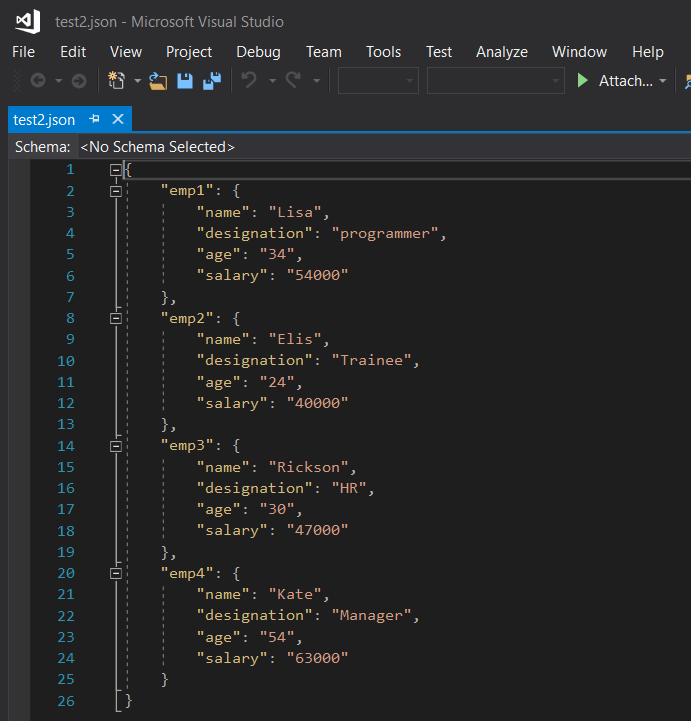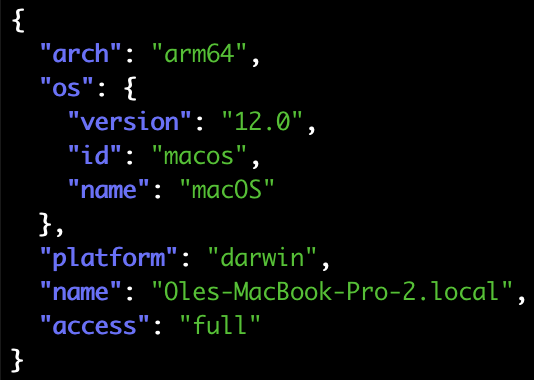

It completes the function for getting JSON response from the URL.

json.loads() method parse the entire JSON string and returns the JSON object.
#Json query in python3 code#
Let’s import JSON and add some lines of code in the above method. Python has a package json that handles this process. ArcGIS Pro: Use web tools in Python scripts To use it as an object in Python you have to first convert it into a dictionary.With open("mapservice.json", "wb") as ms_json:Īrcpy.JSONToFeatures_conversion("mapservice.json", ws + "mapservice.shp", ) This can be used to decode a JSON document from a string that may have extraneous data at the end. 'spatialRel': 'esriSpatialRelIntersects',Įncode_params = (params).encode("utf-8") Decode a JSON document from s (a str beginning with a JSON document) and return a 2-tuple of the Python representation and the index in s where the document ended. # Specify REST URL for service JSON to be returned Python has a built-in package called json, which can be used to work with JSON data. Instead, it uses a whitelist of operators, where keys are strings (the same that would be passed in the operator field of a node) and the values are functions that take a column object and a value and return a sqlalchemy criterion. Params = ĭata = (query=params).encode('utf-8') jsonquery doesn’t care about column type. Ideally, I'd like to be able to define any one of the variables in the query at the beginning. Finally, we pass in the Python dictionary, which will be serialized to JSON. We use Path.rootpath (), as this is a new object. The first argument, person:1 is the name of the key that will reference the JSON. format() using SQL in Python as well as for things such as passing parameters onto website links. And finally, we store the object in Redis using the json ().set () method. If a token is required to access a secured service, use the snippet below. format(), or another method, that would allow me to pass parameters to a JSON query in my Python.This library is available for Python, but also for many other programming languages, meaning that if you master the JMESPath query language, you can use it in many places. Import urllib.parse, urllib.request, os, arcpy, json JMESPath in Python allows you to obtain the data you need from a JSON document or dictionary easily. Output files are stored in the directory containing the Python script.
#Json query in python3 how to#
The following instructions demonstrate how to query a map service for features, write the JSON response to a file, and convert the JSON file to a shapefile using the arcpy.JSONToFeatures_conversion() function. It is possible to use the script as-is, or format them into functions that take a URL argument.Īdjust the query parameters as needed (most, but not all, of the possible parameters are included). To use this feature, we import the JSON package in Python script. Python supports JSON through a built-in package called JSON. This article describes how to do so with a publicly shared map service using ArcPy and other built-in Python libraries. It means that a script (executable) file which is made of text in a programming language, is used to store and transfer the data. However, data can be downloaded from a map service in the form of JSON and the JSON code can be converted to a shapefile or Feature Class. Click on the body section and click the raw radio button. In the key column enter Content-Type and in the Value column enter application/json. First load the json data with Pandas readjson method, then it’s loaded into a Pandas DataFrame. Select POST request and enter your service POST operation URL. In this post, you will learn how to do that with Python. You can do this for URLS, files, compressed files and anything that’s in json format. Suppose, you have a file named person.json which contains a JSON object.
#Json query in python3 download#
In some cases, users enable the Feature Access function on map services to allow easy download of data. Read json string files in pandas readjson(). You can use json.load() method to read a file containing JSON object. Raise Exception('Query failed.How To: Extract data from a map service using Python Summary The simplest way is to use the requests library to make HTTP requests to the API endpoint, then the json library to convert those requests into JSON format: import requests Situation: We need to query GraphQL, in JSON format, to convert to dataframe.


 0 kommentar(er)
0 kommentar(er)
